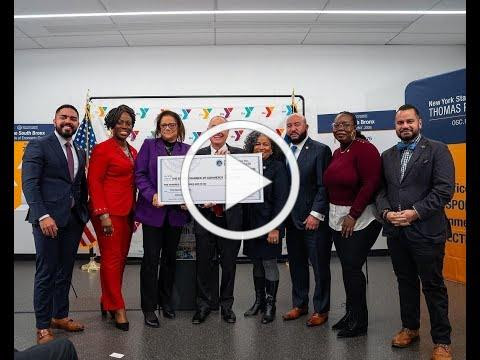New York City Comptroller Brad Lander released the Annual Report on Capital Debt and Obligations for fiscal year 2024, analyzing the city’s debt in relation to its tax base and national benchmarks. This report is accompanied by the launch of a new web resource about the Comptroller’s Office’s work to strengthen New York City’s infrastructure by focusing more strategically on where investment is needed, reforming the capital process to deliver projects on-time and on-budget, and raising the funding necessary to invest in the vital construction and improvements relied on by millions of residents, tourists, and daily commuters.
The report’s key findings:
- As of the start of FY 2024, New York City’s debt was $37.2 billion below the State Constitutional limit of $131.6 billion, highlighting the City’s substantial borrowing capacity and strong financial foundation. However, if the City continues to commit capital at the rate projected in the capital plan, it could exhaust its debt-incurring capacity by FY 2033.
- The share of the City’s tax revenues dedicated to debt service grew from 9.6% in FY 2022 to 10.2% in FY 2023, well below the 15% threshold used to evaluate affordability. However, rising interest rates and greater capital debt will push that number up nearer to the threshold in the coming years.
- The City’s credit rating remains strong. New York City’s debt burden is relatively high compared to U.S. peer cities, but not unreasonably so when viewed in context. Rating agencies maintained New York City’s bond rating at Aa2 (Moody’s), AA (S&P and Fitch), and AA+ (Kroll).
“New York City’s capital dollars contribute to essential infrastructure from schools, water systems, public spaces to housing in order to address the evolving needs of our growing city. This report provides a detailed look at how much debt the City has taken on to support these investments and how much room is left to borrow more. The City faces impending challenges from aging infrastructure, housing affordability, and the climate crisis. We must continue to strategically plan and invest in long-term solutions to ensure a sustainable and resilient future,” said Comptroller Brad Lander.
As the City manages these challenges, Comptroller Lander also launched a new web resource to bring transparency to the City’s infrastructure needs, help New Yorkers assess the status of the City’s capital planning, investments, and project management. This website is a repository for initiatives to improve capital project delivery, in-depth reports about the state of repair of the City’s infrastructure, analyses of the costs and delays in City construction, vulnerabilities in the face of climate change, and economic development opportunities among other critical aspects of public infrastructure projects.
“New Yorkers deserve a clear view into how the City spends their tax dollars– especially on the capital investments that are essential for our city’s long-term thriving. This new resource will help make sure funds are invested strategically by identifying the most critical investments to meet the challenges of the coming decades, protecting City dollars, and ensuring timely completion of projects with real-time insights into project timelines and budgets. Ultimately by transparently presenting our capital projects, this resource will empower New Yorkers to actively participate in overseeing these initiatives,” continued Comptroller Lander.
Read the full Annual Report on Capital Debt and Obligations.
View the new capital projects web resource.













